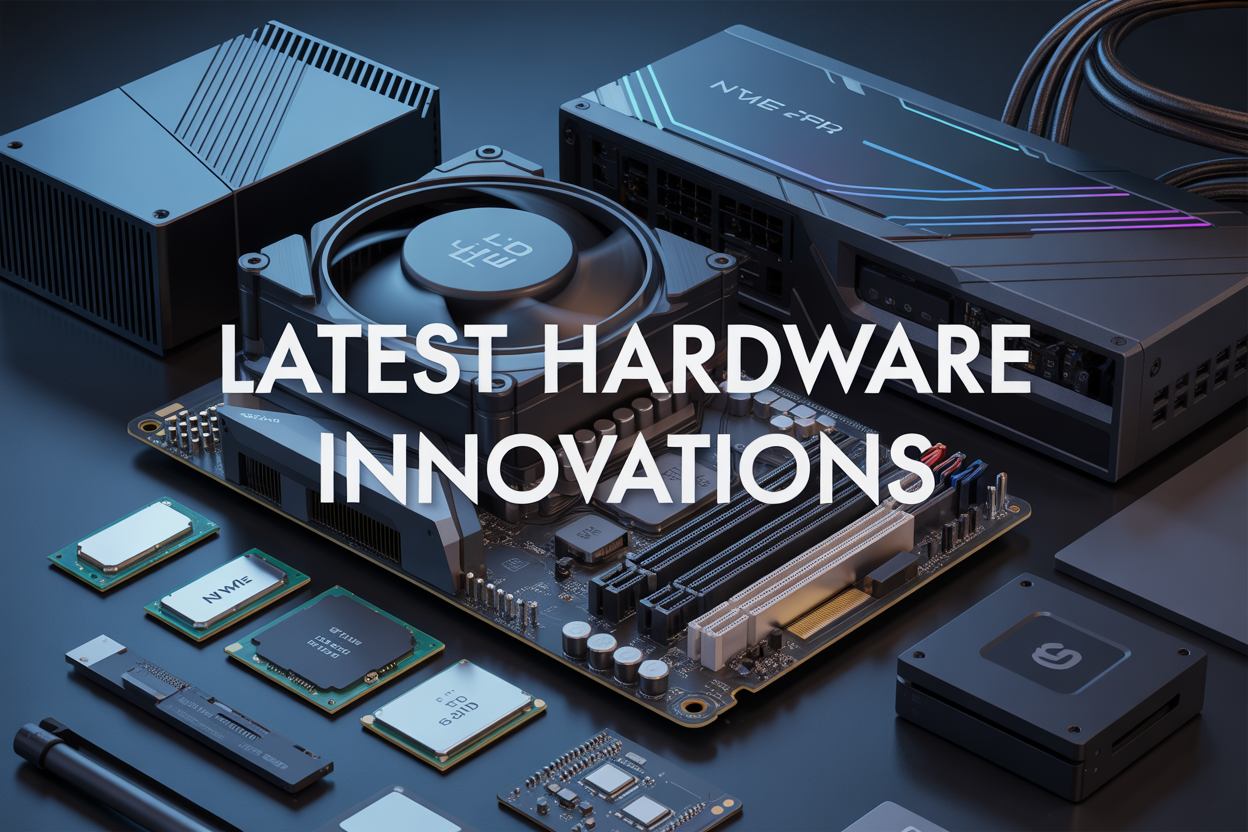
Computer hardware advancements in 2024 are reshaping what's possible with modern PCs. Gamers, AI researchers, content creators, and tech enthusiasts need to stay current with the latest CPU performance improvements, GPU technology trends, and high-performance PC components to meet today's demanding computing requirements.
This guide covers the game-changing innovations transforming desktop performance. You'll discover how revolutionary CPU advancements are delivering unprecedented processing power, while next-generation Nvidia AMD processors and AI gaming graphics cards push the boundaries of what's achievable in gaming and artificial intelligence workloads. We'll also explore ultra-fast SSD storage solutions exceeding 1TB capacity and advanced motherboard USB4 WiFi 7 connectivity that keeps pace with modern computing requirements.
Revolutionary CPU Advancements Transforming Computing Performance
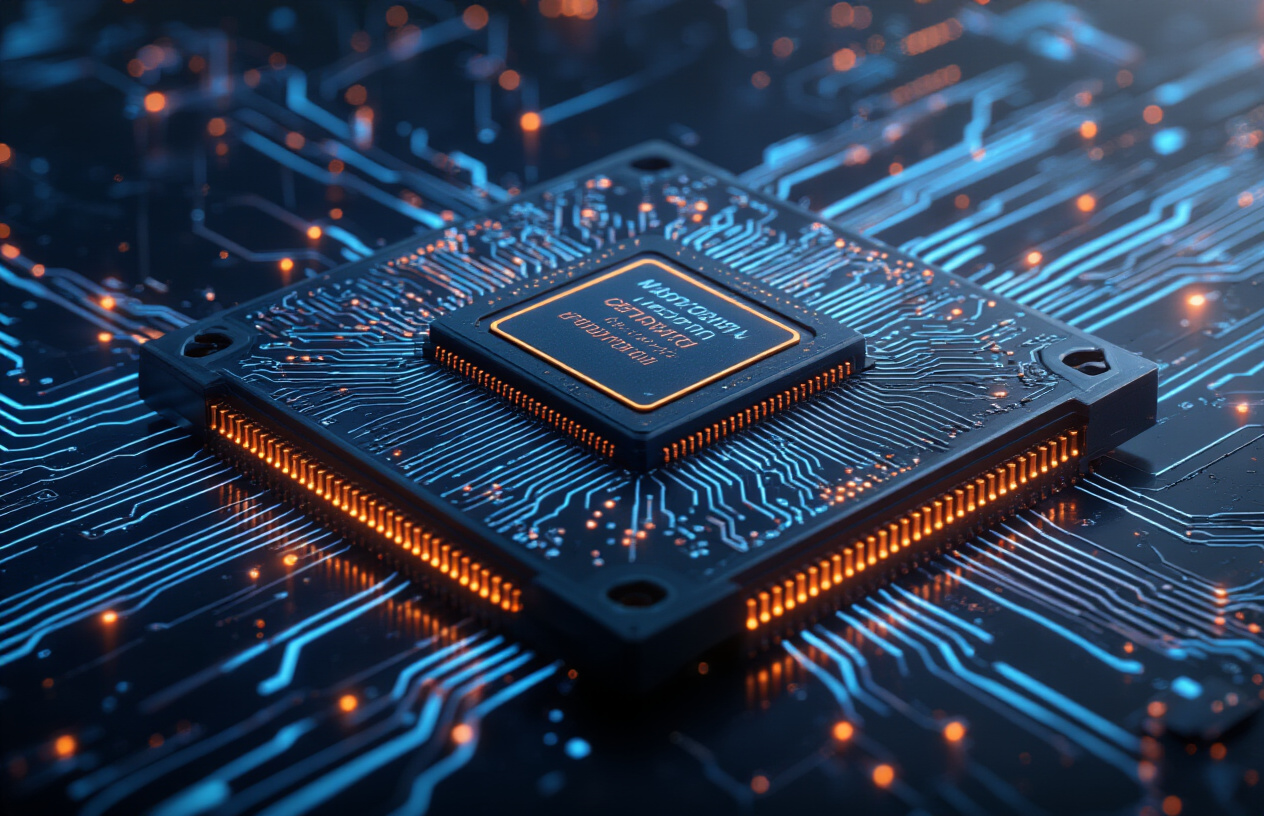
Latest multi-core architectures delivering unprecedented processing speeds
The CPU landscape has transformed dramatically with the arrival of revolutionary multi-core architectures that push the boundaries of what's possible in modern computing. Intel's 13th Gen Core processors and AMD's Ryzen 7000 series represent the pinnacle of this evolution, featuring up to 24 cores and 32 threads that handle the most demanding workloads with remarkable ease. These computer hardware advancements 2024 bring desktop performance levels that were unimaginable just a few years ago.
The secret behind these CPU performance improvements lies in hybrid architecture designs that combine high-performance cores with efficient cores. Intel's P-cores handle intensive single-threaded tasks while E-cores manage background processes, creating a seamless multitasking experience. AMD counters with their 3D V-Cache technology, stacking additional cache memory directly onto the processor die, resulting in gaming performance gains of up to 15% compared to previous generations.
Thread scheduling has become incredibly sophisticated, with these processors intelligently distributing workloads across cores based on real-time analysis of task requirements. This smart allocation means video rendering, 3D modeling, and complex calculations finish faster than ever before, while everyday tasks like web browsing and document editing remain buttery smooth.
Enhanced energy efficiency reducing power consumption by up to 40%
Power efficiency has become the holy grail of processor design, and manufacturers have made remarkable strides in reducing energy consumption without sacrificing performance. The latest processors achieve up to 40% better power efficiency compared to their predecessors, thanks to advanced power management technologies and refined manufacturing processes.
Dynamic voltage and frequency scaling (DVFS) has reached new levels of precision, with processors adjusting their power draw thousands of times per second based on workload demands. When you're checking emails, the CPU automatically reduces clock speeds and voltage, consuming just a fraction of its maximum power. The moment you launch a demanding application, it instantly scales up to deliver full performance.
Sleep states have also evolved significantly. Modern processors can enter ultra-low power modes that consume less than 1 watt while maintaining system responsiveness for instant wake-up. This efficiency translates to longer laptop battery life, reduced electricity bills for desktop users, and lower heat generation that keeps systems running cooler and quieter.
Specialized AI acceleration units integrated directly into processors
Artificial intelligence workloads have driven one of the most exciting developments in processor design: dedicated AI acceleration units built right into the CPU. These specialized components, often called Neural Processing Units (NPUs), handle machine learning tasks with incredible efficiency, making AI applications more accessible to everyday users.
Intel's latest processors feature AI Boost technology that can process up to 34 trillion operations per second (TOPS) for AI workloads. AMD's XDNA architecture brings similar capabilities, enabling real-time AI-powered features like background blur in video calls, intelligent noise cancellation, and automated photo enhancement without relying on cloud services or dedicated graphics cards.
These AI units excel at handling transformer models, computer vision tasks, and natural language processing directly on your device. Content creators benefit from AI-accelerated video upscaling, while gamers enjoy intelligent frame generation and latency reduction. The integration means AI features work faster, consume less power, and protect your privacy by keeping data processing local.
Advanced manufacturing processes enabling smaller, faster chips
The foundation of all these improvements rests on cutting-edge manufacturing processes that create transistors smaller than ever before. TSMC's 4nm and Intel's Intel 4 process nodes pack billions of transistors into chip areas smaller than a fingernail, with each transistor measuring just a few nanometers across.
These advanced processes deliver a triple benefit: higher transistor density allows more features and cores per chip, improved switching speeds boost performance, and reduced electrical resistance enhances power efficiency. The precision required is mind-boggling – we're talking about manufacturing tolerances smaller than individual atoms.
| Process Node | Transistor Density | Power Improvement | Performance Gain |
|---|---|---|---|
| 7nm | 96.5 MTr/mm² | Baseline | Baseline |
| 5nm | 171.3 MTr/mm² | 30% better | 15% faster |
| 4nm | 190+ MTr/mm² | 40% better | 20% faster |
Gate-all-around transistor designs and extreme ultraviolet lithography enable this precision manufacturing. These innovations allow processors to maintain Moore's Law progression while introducing entirely new capabilities like built-in security features, advanced error correction, and specialized execution units for emerging workloads.
Next-Generation GPU Technologies Powering AI and Gaming Excellence
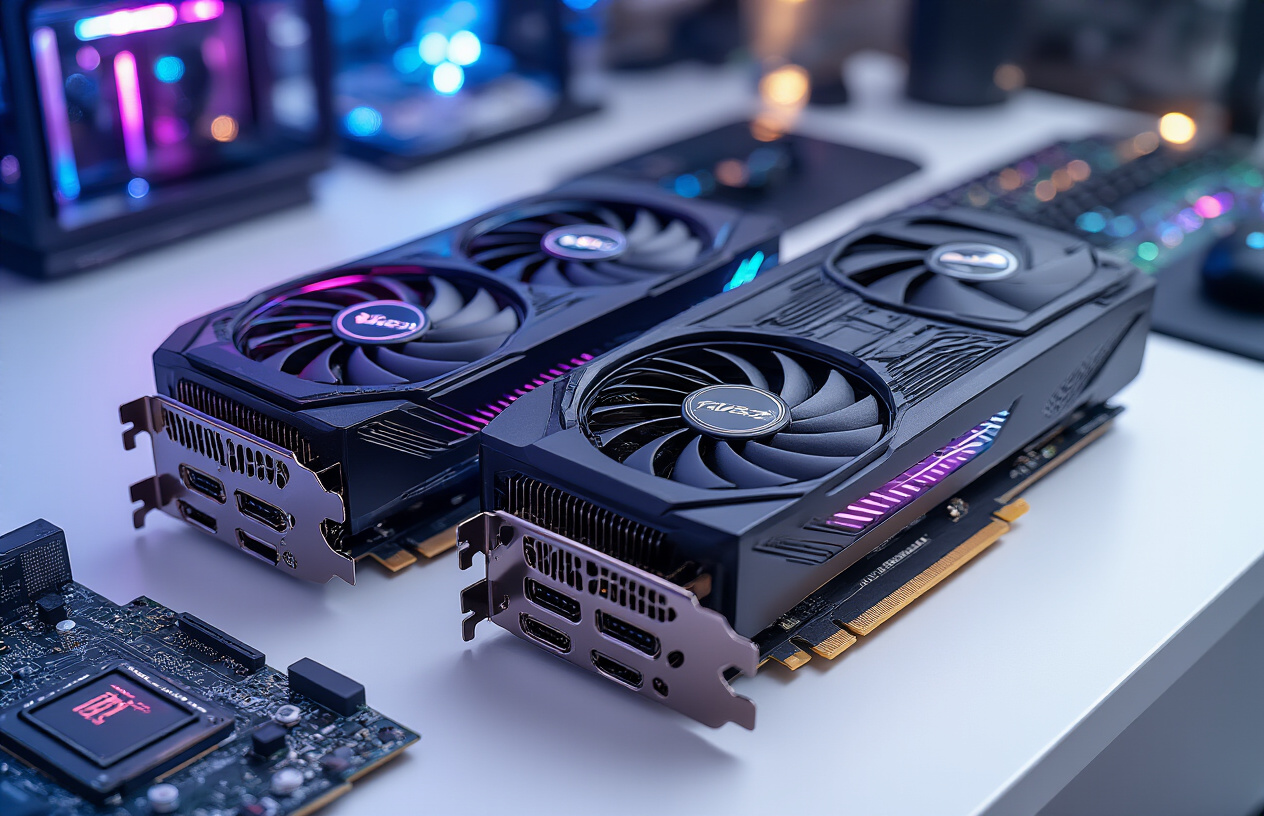
Nvidia's Breakthrough AI-Focused Graphics Cards Revolutionizing Machine Learning
Nvidia has completely transformed the landscape of AI computing with their latest generation of graphics cards. The RTX 4090 and the professional-grade A100 series have become the gold standard for machine learning workloads. These cards pack an incredible amount of tensor cores specifically designed to accelerate AI calculations, making them up to 10 times faster than previous generations for deep learning tasks.
The real game-changer here is Nvidia's DLSS 3.5 technology, which uses AI to generate entirely new frames between traditionally rendered ones. This creates smoother gameplay while actually reducing the computational load on the GPU. For AI researchers and developers, the new cards support mixed-precision training, allowing models to train faster while using less memory.
What sets these modern Nvidia cards apart is their ability to handle both AI workloads and gaming simultaneously. You can train a neural network in the background while still getting excellent gaming performance. The memory bandwidth has increased dramatically, with some models featuring up to 24GB of GDDR6X memory, giving AI models the room they need to operate efficiently.
AMD's Competitive Gaming-Optimized GPUs Delivering Superior Visual Experiences
AMD has been making serious waves in the GPU market with their RDNA 3 architecture. The RX 7900 XTX and RX 7800 XT have positioned AMD as a real competitor to Nvidia, especially when it comes to pure gaming performance per dollar. These cards excel at 4K gaming and offer impressive frame rates in the latest AAA titles.
The standout feature of AMD's latest offerings is their focus on efficiency. The RX 7800 XT consumes significantly less power than comparable Nvidia cards while delivering similar performance levels. This translates to lower electricity bills and less heat generation in your gaming setup.
AMD's FidelityFX Super Resolution (FSR) 3.0 has also reached impressive maturity. Unlike Nvidia's DLSS, FSR works on a wider range of hardware, including older graphics cards. The technology upscales lower resolution images to higher resolutions while maintaining visual quality, giving gamers better performance without sacrificing the visual experience.
Ray Tracing Capabilities Bringing Cinematic Realism to Gaming Environments
Ray tracing has moved from being a nice-to-have feature to an essential component of modern gaming. Both Nvidia and AMD have significantly improved their ray tracing performance in their latest GPU technology trends. The difference is immediately noticeable - reflections look natural, shadows have proper depth, and lighting behaves exactly like it would in real life.
Modern games like Cyberpunk 2077, Control, and Minecraft RTX showcase what's possible when ray tracing is implemented properly. Water surfaces reflect the environment accurately, glass shows realistic refractions, and global illumination creates atmospheric lighting that traditional rendering simply cannot achieve.
The performance impact of ray tracing has decreased substantially. Where early implementations could cut frame rates in half, current AI gaming graphics cards can maintain 60+ fps at 1440p resolution with ray tracing enabled. This improvement comes from dedicated RT cores that handle ray tracing calculations separately from regular graphics processing.
Unified Memory Architectures Improving Data Processing Efficiency
The latest high-performance PC components feature unified memory architectures that eliminate the traditional bottleneck between system RAM and graphics memory. AMD's Smart Access Memory and Nvidia's Resizable BAR allow the CPU to access the full GPU memory pool directly, reducing data transfer delays.
This architectural improvement particularly benefits content creators working with large files and AI researchers processing massive datasets. Instead of copying data back and forth between system memory and graphics memory, the entire system can work with a unified memory pool, dramatically improving workflow efficiency.
The unified approach also helps with gaming performance, especially in open-world games that need to stream large amounts of texture data. Modern titles can preload assets more efficiently, reducing stuttering and improving overall game stability. Memory bandwidth utilization has improved by up to 30% in real-world scenarios, making the entire system feel more responsive.
Ultra-Fast Storage Solutions Exceeding 1TB Capacity Limits
NVMe SSD speeds reaching 7000+ MB/s for instant data access
The latest NVMe SSDs are redefining what instant means in the storage world. With sequential read speeds smashing through the 7,000 MB/s barrier, these modern computer hardware advancements 2024 deliver performance that makes traditional hard drives look like they're moving in slow motion. Samsung's 990 PRO and Western Digital's SN850X represent the cutting edge, with some models achieving sequential reads exceeding 7,300 MB/s and writes around 6,900 MB/s.
These blazing speeds translate to real-world benefits that transform daily computing. Large game installations that once took hours now complete in minutes. Video editors working with 8K footage experience smooth scrubbing and instant timeline responses. Boot times drop to under 10 seconds, and application launches happen almost instantaneously. The difference becomes especially noticeable when transferring massive files or working with AI models that require rapid data streaming.
Random read and write operations also see dramatic improvements, with top-tier drives delivering over 1 million IOPS (Input/Output Operations Per Second). This performance boost affects everything from database queries to multitasking scenarios where multiple applications compete for storage access simultaneously.
PCIe 5.0 compatibility doubling previous generation transfer rates
PCIe 5.0 represents a quantum leap in storage interface technology, doubling the theoretical bandwidth from PCIe 4.0's 8 GT/s to an impressive 16 GT/s per lane. This translates to maximum theoretical speeds of 15,754 MB/s for x4 NVMe drives, though real-world performance typically reaches around 12,000-13,000 MB/s due to protocol overhead and thermal limitations.
Current PCIe 5.0 SSDs like the Crucial T700 and Gigabyte AORUS Gen5 showcase this potential, delivering sustained read speeds approaching 12,400 MB/s. The increased bandwidth proves particularly valuable for workstation applications, content creation, and scenarios involving large dataset manipulation.
The backwards compatibility ensures these drives work seamlessly in PCIe 4.0 and 3.0 slots, though performance scales down accordingly. Early adopters benefit from future-proofing their systems as motherboard manufacturers increasingly integrate PCIe 5.0 M.2 slots into their latest designs.
Advanced wear leveling extending drive lifespan significantly
Modern SSD storage solutions 1TB incorporate sophisticated wear leveling algorithms that dramatically extend drive longevity. These intelligent systems distribute write operations across all available NAND flash cells, preventing premature wear on frequently accessed areas. Advanced controllers now implement dynamic wear leveling, which actively moves static data to balance cell usage patterns.
Today's premium drives feature enhanced error correction codes (ECC) and over-provisioning techniques that reserve additional NAND cells for wear management. Manufacturers typically rate current generation drives for 600-1,200 TBW (Terabytes Written) for 1TB models, representing significant improvements over previous generations.
Temperature monitoring and thermal throttling protect drives from heat-induced degradation, while power loss protection circuits safeguard data integrity during unexpected shutdowns. These protective measures combined ensure enterprise-grade reliability for consumer applications.
Cost-effective high-capacity options making terabyte storage affordable
The price per gigabyte for high-performance PC components continues its downward trajectory, making terabyte-class storage accessible to mainstream users. Quality 1TB NVMe drives now retail for $50-80, while 2TB models hover around $100-150, representing remarkable value compared to pricing just two years ago.
Budget-conscious builders can access excellent performance through drives like the Kingston NV2 or Crucial MX4, which deliver solid everyday performance without premium pricing. Meanwhile, mid-tier options provide the sweet spot between cost and performance, offering speeds around 3,500-5,000 MB/s at competitive prices.
Bulk storage needs find solutions in QLC NAND drives that sacrifice some write endurance for dramatically increased capacity per dollar. These drives excel for media storage, game libraries, and archival purposes where massive capacity trumps absolute peak performance.
| Capacity | Budget Option | Mid-Range Performance | Premium Speed |
|---|---|---|---|
| 1TB | $50-60 | $70-90 | $120-150 |
| 2TB | $90-110 | $140-180 | $220-280 |
| 4TB | $200-250 | $300-400 | $500-650 |
Advanced Motherboard Features Supporting Modern Connectivity Standards
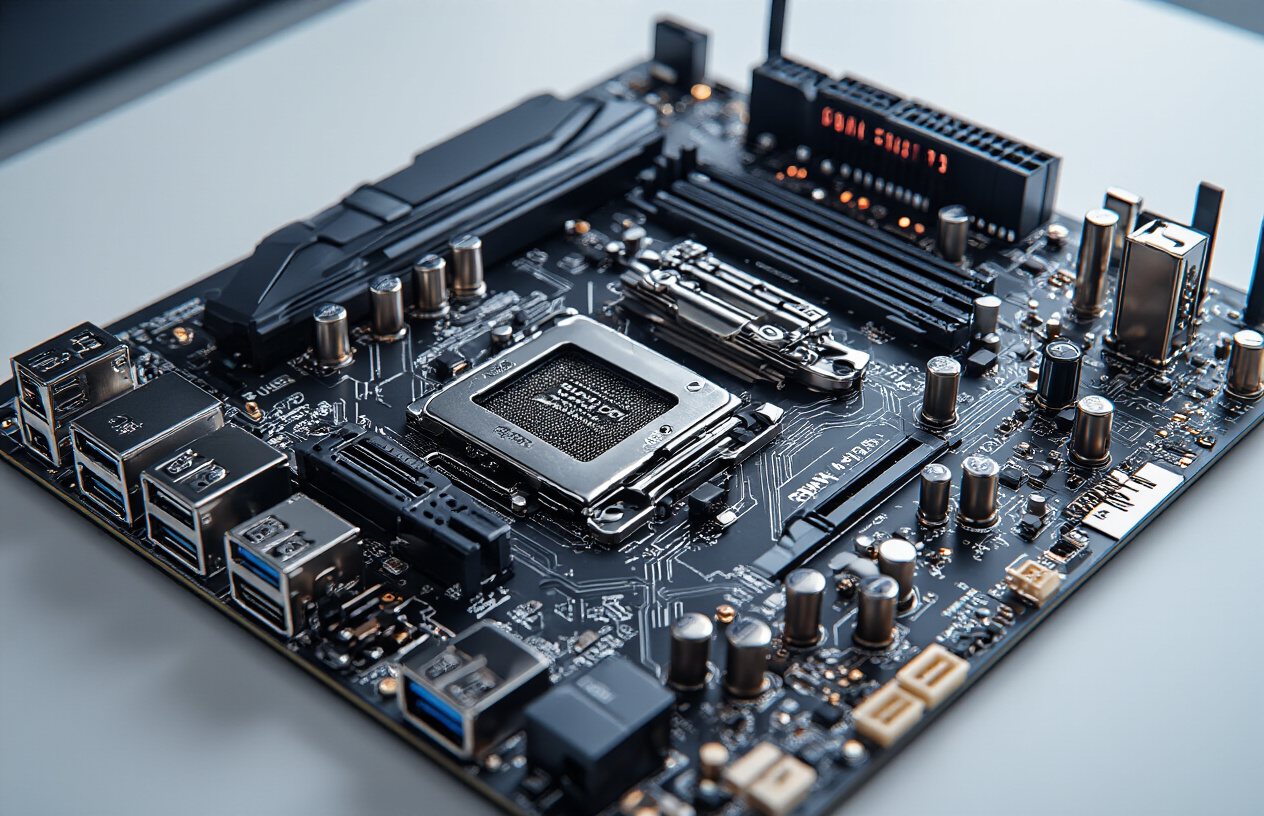
USB4 Implementation Enabling 40Gbps Data Transfer Speeds
Modern motherboards are finally catching up with the blazing-fast data transfer demands of today's computing landscape. USB4 technology represents a massive leap forward, delivering up to 40Gbps transfer speeds that make previous USB standards look sluggish. This speed boost transforms how we handle large file transfers, external storage connections, and high-resolution display outputs through a single cable.
The real game-changer here is USB4's backward compatibility with existing devices while providing Thunderbolt 3 compatibility. Professional content creators working with 8K video files or massive RAW photo collections can now transfer gigabytes of data in seconds rather than minutes. Gaming enthusiasts benefit from lightning-fast external SSD connections that rival internal storage performance.
What makes USB4 particularly impressive is its intelligent bandwidth allocation. The protocol dynamically adjusts data flow between different connected devices, ensuring optimal performance whether you're transferring files while simultaneously running an external 4K monitor. This smart resource management eliminates the bottlenecks that plagued earlier USB implementations.
Wi-Fi 7 Integration Providing Ultra-Low Latency Wireless Connections
Wi-Fi 7 integration on cutting-edge motherboards delivers wireless performance that rivals wired connections for many applications. The new 802.11be standard introduces Multi-Link Operation (MLO), allowing devices to transmit and receive data across multiple frequency bands simultaneously. This creates incredibly stable connections with latencies as low as 1-2 milliseconds.
Competitive gamers now enjoy wireless connections that don't compromise their performance. The 320MHz channel bandwidth available in Wi-Fi 7 provides theoretical speeds up to 46Gbps, though real-world performance typically ranges between 5-10Gbps under optimal conditions. This massive bandwidth headroom ensures consistent performance even in crowded network environments.
The technology also introduces advanced Quality of Service (QoS) features that prioritize gaming traffic, video streaming, and other latency-sensitive applications. Smart antenna arrays automatically optimize signal strength and direction, reducing interference from neighboring networks and household devices.
Enhanced VRM Designs Supporting High-Performance Component Stability
Voltage Regulator Module (VRM) designs have evolved dramatically to handle the power-hungry demands of modern high-performance components. Today's motherboards feature sophisticated multi-phase power delivery systems that provide clean, stable power to CPUs and GPUs even under extreme overclocking conditions.
Digital VRM controllers monitor power delivery thousands of times per second, making micro-adjustments to maintain optimal voltage levels. This precision prevents the voltage droop that can cause system instability during intensive workloads. Premium motherboards now include 16-20 phase VRM designs compared to the 4-8 phases common in previous generations.
Heat dissipation has become equally important, with manufacturers implementing massive heatsinks, heat pipes, and even active cooling solutions for VRM components. These thermal management systems ensure consistent performance during extended gaming sessions or AI processing workloads that push hardware to its limits.
Future-Proof Expansion Slots Accommodating Next-Generation Hardware
Smart motherboard manufacturers are designing expansion capabilities with tomorrow's hardware in mind. PCIe 5.0 slots provide double the bandwidth of PCIe 4.0, ensuring compatibility with upcoming graphics cards and storage devices that will demand higher data throughput. These slots deliver up to 128GB/s of bidirectional bandwidth per x16 slot.
M.2 slot configurations have expanded beyond basic storage needs. Modern motherboards include multiple M.2 slots supporting PCIe 5.0 SSDs, with some premium boards offering up to five M.2 connections. This allows users to create RAID arrays of ultra-fast storage or dedicate specific slots for different purposes like system drives, game libraries, and project files.
The strategic placement of these expansion slots considers thermal management and component clearance. Manufacturers now space slots to prevent graphics card interference with M.2 drives and include dedicated heatsinks to maintain optimal operating temperatures across all connected components.
High-Efficiency Power Supply Units Optimizing Energy Consumption
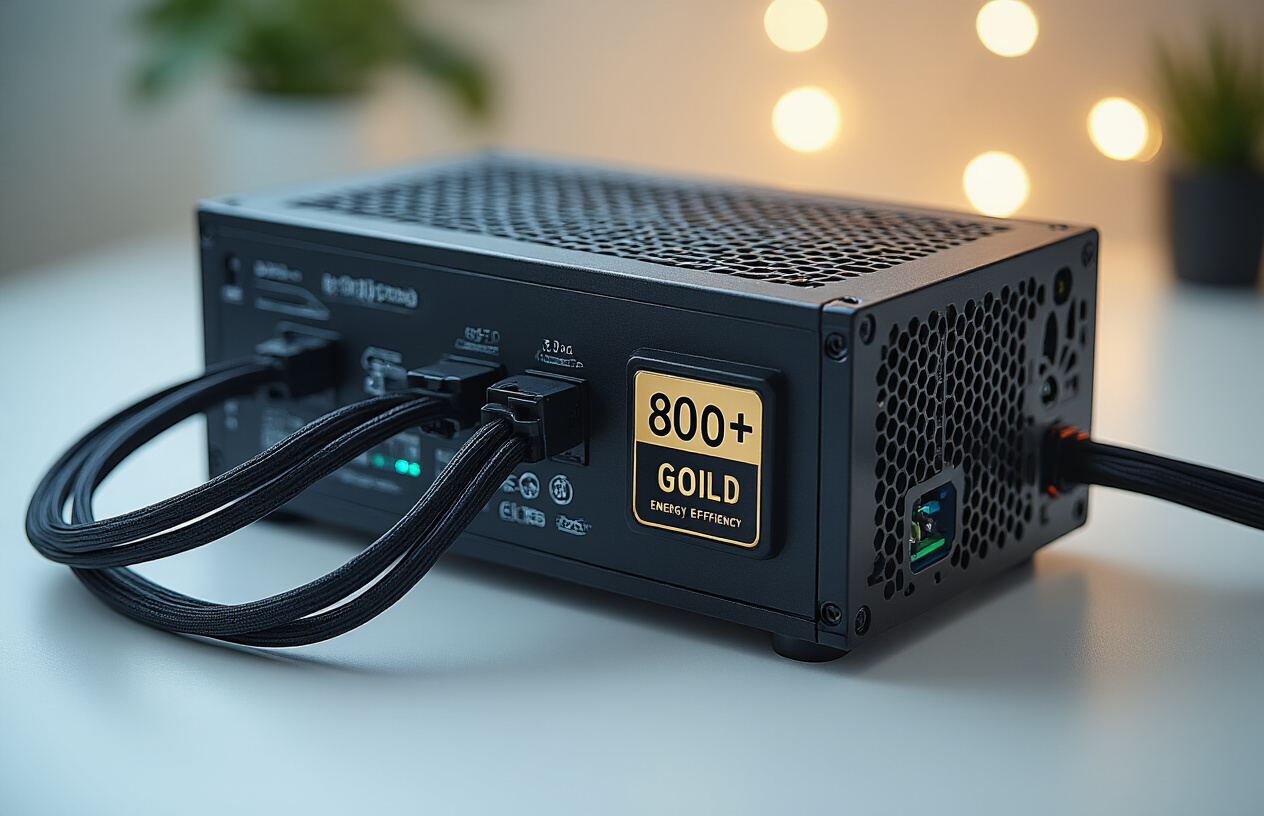
80 Plus Titanium Certification Achieving 94% Energy Efficiency
The power supply industry has reached a remarkable milestone with 80 Plus Titanium certification, representing the pinnacle of energy efficiency standards. These cutting-edge PSUs achieve an impressive 94% efficiency rating at 50% load, dramatically reducing energy waste and heat generation. High-performance PC components now demand this level of efficiency as modern computing workloads consume increasing amounts of power.
Modern 80 Plus Titanium PSUs deliver consistent performance across varying load conditions, maintaining efficiency above 90% even at 20% and 100% load scenarios. This translates to significant cost savings on electricity bills, particularly for users running demanding applications like AI processing, cryptocurrency mining, or extended gaming sessions. The reduced heat output also decreases the burden on cooling systems, creating a more stable thermal environment for expensive components.
Premium manufacturers now integrate advanced switching technologies, including LLC resonant converters and synchronous rectification, to achieve these exceptional efficiency levels. These innovations minimize switching losses and improve power factor correction, resulting in cleaner power delivery to sensitive components.
Modular Cable Systems Reducing Clutter and Improving Airflow
Modular PSU designs have revolutionized cable management, allowing users to connect only the cables needed for their specific configuration. This approach eliminates unnecessary cable clutter that traditionally obstructed airflow within computer cases. Modern computing requirements demand optimal thermal management, making modular systems essential for maintaining peak performance.
The benefits extend beyond aesthetics, as improved airflow directly impacts component temperatures and system stability. Graphics cards, CPUs, and storage drives operate more efficiently in well-ventilated environments, reducing thermal throttling and extending component lifespan. Professional builders particularly appreciate modular systems when working with compact cases or custom loop cooling configurations.
Advanced modular PSUs feature color-coded connectors and flat ribbon cables that further optimize airflow patterns. Some manufacturers provide custom cable lengths and sleeving options, allowing enthusiasts to create perfectly tailored installations that maximize both performance and visual appeal.
Advanced Protection Circuits Safeguarding Expensive Components
Modern PSUs incorporate multiple protection mechanisms that act as the first line of defense against electrical anomalies. Over-voltage protection (OVP), under-voltage protection (UVP), and over-current protection (OCP) work together to prevent damage to motherboards, graphics cards, and storage devices. These safety features become increasingly critical as component costs continue rising.
Short circuit protection (SCP) immediately shuts down the PSU when detecting dangerous fault conditions, preventing catastrophic damage to entire systems. Over-temperature protection (OTP) monitors internal PSU temperatures and reduces output or triggers shutdown when thermal limits are exceeded. This multi-layered approach ensures system stability even during extreme operating conditions.
Recent innovations include advanced surge protection and power-good signaling that communicates PSU status to motherboards. These features enable intelligent power management and coordinated shutdown procedures, protecting data integrity during unexpected power events.
Silent Operation Features Maintaining Quiet Computing Environments
Noise reduction has become a priority for modern PSU design, with manufacturers implementing sophisticated fan control algorithms and premium bearing technologies. Zero-RPM fan modes allow PSUs to operate completely silently under light loads, only activating cooling when thermal conditions require airflow. This feature particularly benefits users who value quiet operation during productivity tasks or media consumption.
High-quality fluid dynamic bearings (FDB) and magnetic levitation fans significantly reduce operational noise while extending service life. These components maintain whisper-quiet operation even under full load conditions, ensuring PSUs don't become the loudest component in modern systems.
Advanced thermal management includes strategically positioned heat sinks, thermal pads, and optimized internal layouts that maximize passive cooling efficiency. This reduces fan operation frequency and intensity, contributing to overall system quietness while maintaining optimal component temperatures.

The latest computer hardware developments show just how fast technology is moving. We've seen CPUs getting more powerful, GPUs from Nvidia and AMD becoming specialized for AI and gaming, storage solutions hitting speeds we couldn't imagine before, and motherboards that support the newest connectivity standards like USB4 and Wi-Fi 7. Power supplies are also getting smarter, using less energy while delivering better performance.
These improvements aren't just about having the latest gadgets – they're about meeting the real demands of today's computing world. Whether you're gaming, working with AI applications, or creating high-resolution content, these hardware upgrades work together to give you the performance you need. If you're thinking about upgrading your system, focus on the components that match your specific needs rather than trying to get everything at once. The technology is there to support whatever you want to do with your computer.






0 Comments